Apple Mac mini Review (Mid 2010)
by Anand Lal Shimpi on August 9, 2010 3:37 AM ESTSpin the mini
Apple has done away with conventional feet and instead the mini rests on a circular pedestal. The circular base doubles as an access port to the internals of the mini.
The removable cover has two indentions that you put your fingers in. A counter clock-wise twist (about 1/16th of a rotation) will unlock the cover. Removing it reveals the only easily user replaceable components in the mini: the DDR3 SO-DIMMs.
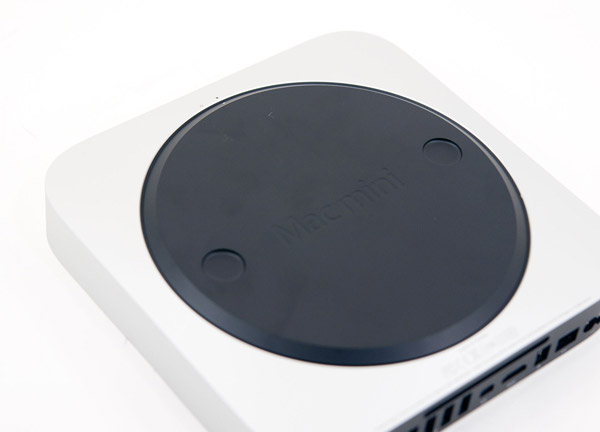
The $699 configuration comes with two 1GB DDR3-1066 sticks. Woefully inadequate for today’s workloads, particularly since the mini only comes with a 5400RPM 2.5” HDD so any swapping to disk is painfully slow.
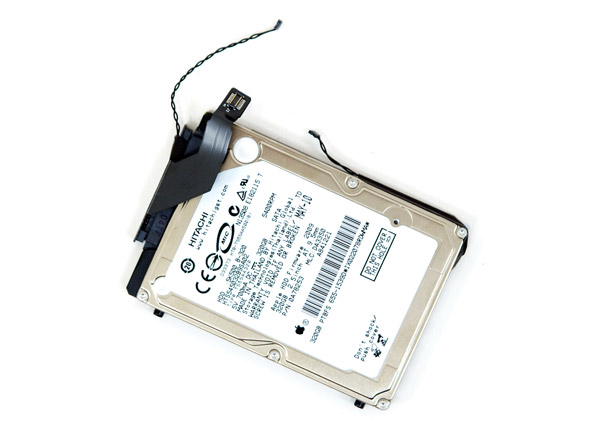
The 2.5" Hitachi 5K500 5400RPM HDD
Replacing memory is as easy as can be on the Mac mini, just remove the cover, pop out the sticks and install new ones. It’s just like a notebook, but easier.

Upgrading the hard drive is much more complicated unfortunately. To get it out you have to remove the motherboard, which isn’t hard but definitely not easy. iFixit has a guide here.
Start by removing the four screws that hold the WiFi antenna in place. Don’t forget to disconnect the antenna cable once you’ve done so.
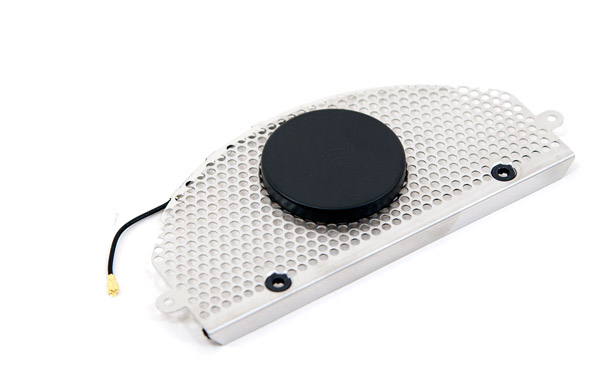

The entire system is cooled by a single fan that channels air through a shroud over a heatsink with a pair of heatpipes. Remove the fan screws, remove the shroud, remove the heatsink screws and then unscrew everything you see on the motherboard and you’re half way there.
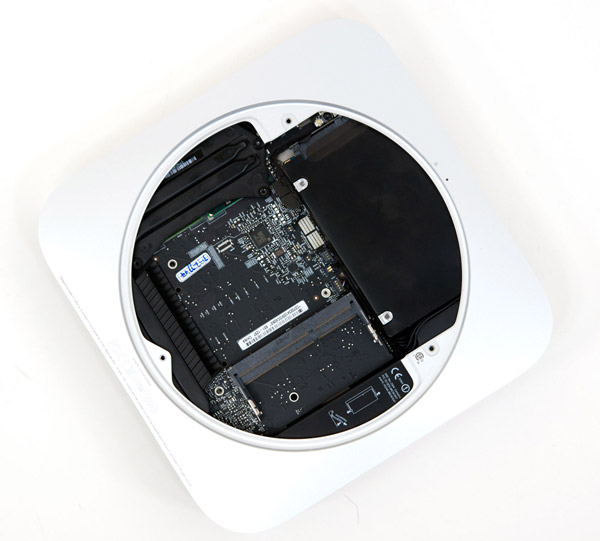
Disconnect all of the temperature sensors and cable connectors from the back of the board and you can finally slide the board out. Unfortunately there’s no easy way to grab onto the motherboard itself so you’re better off sticking two thin screwdrivers through the two open holes in the motherboard and using them to pull the board out of the chassis.
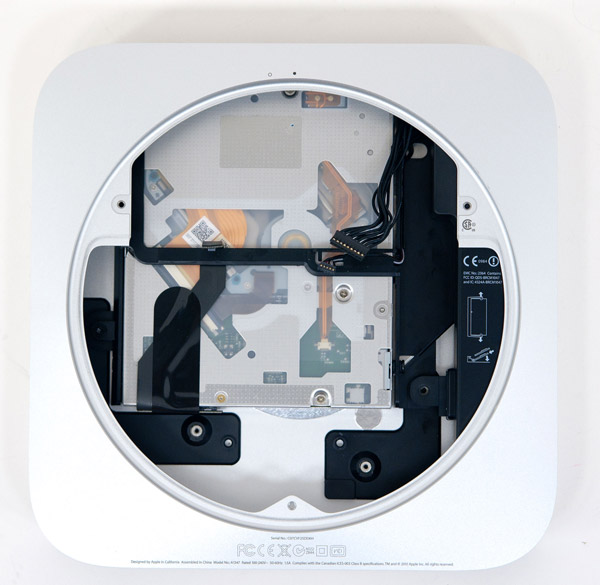
The mini minus a motherboard and HDD
When you’ve done that you can pry the HDD out of its resting spot, unplug its cable and replace it. Ugh.
With the motherboard out we can remove its heatsink and get a bit more personal. Down to the screws in the system, the Mac mini is very much a headless notebook:
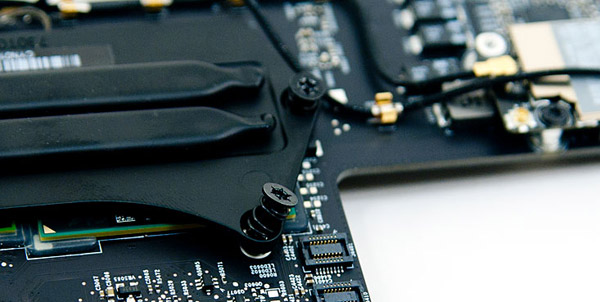
These spring loaded screws are common on notebook heatsinks

Underneath the heatsink we have the two chips that make up the Mac mini: Intel's Core 2 Duo P8600 (right) and NVIDIA's GeForce 320M (left):

The 320M has the graphics, memory controller, SATA controller, PCIe and USB interfaces. Looking at the size of the die you can see how highly Apple values the GPU over the CPU in a system like this. Ten years ago you'd be looking at a four-chip solution (CPU, North Bridge, South Bridge, GPU), today we're down to two. Soon enough we'll be able to have a single SoC that delivers the functionality and performance of these two discrete chips.
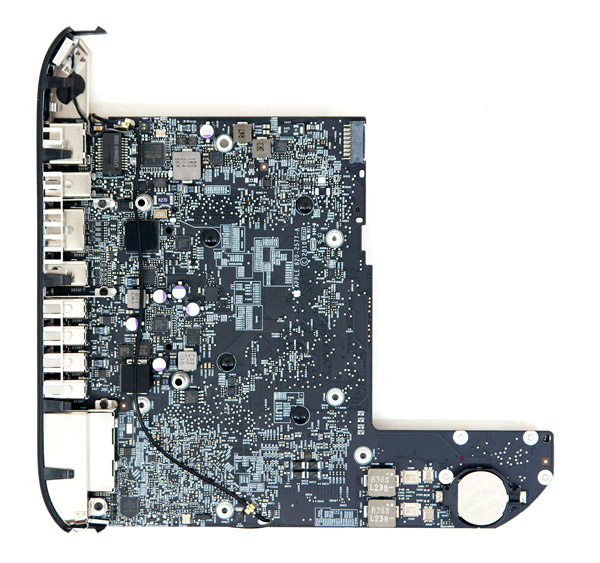










93 Comments
View All Comments
DaveGirard - Tuesday, August 10, 2010 - link
seriously - I use a Mac Pro Nehalem for Maya and if I had to build a network of headless slaves, this would be an expensive and underperforming option. You could make a vanilla i7 for less and it would destroy this machine for rendering. Nice to see this is a great mini server/HTPC but it's not for performance.name99 - Tuesday, August 10, 2010 - link
Why would you engage in such a stupid enterprise?Apple is NOT selling you a bunch of MIPs here at the lowest possible cost. They are selling you a device that runs MacOSX, with IO options adequate for most users, that is low power and small.
If you do not need any of these capabilities, then buying such a computer is stupid.
Or, to put it another, don't buy a package of, what, 10GFlops AND a reasonable quality GPU AND two video ports AND FW8000 AND OSX AND a small form factor, and then complain that the package costs more than this other package consisting of 10GFlops and nothing else.
But if this device meets your needs, it's great --- I got a previous gen mini for HTPC, and it does what it is meant to do, at a price I found acceptable.
JAS - Monday, August 9, 2010 - link
I bought one of these to run a public kiosk display (Apple Keynote program on a loop). Beyond its good looks, the new Mac Mini provides more than enough horsepower for what most "normal" people use computers for -- web browsers, media playback, e-mail, word processing and so forth. I like how access to the RAM has been made easy and the addition of the HDMI and SD connectors.My only significant criticism of the new Mac Mini is its retail price. It ought to be $50 to $100 less to be considered an "entry level" Macintosh.
nafhan - Monday, August 9, 2010 - link
I agree from a computing aspect, but it really ought to be about $200 - $300 less to be considered a good computer for the average home user. Especially since they will have to spring another $100+ for a monitor/mouse/keyboard right off the bat.Steve W - Monday, August 9, 2010 - link
The idea behind the Mac Mini is that you DON'T have to spring for a "monitor/mouse/keyboard" if you are the average switcher. If you need a monitor, then the iMac is a better buy.Ratman6161 - Tuesday, August 10, 2010 - link
Given that it does not come with those items? The only way you would not need them is if you just happened to already have them. But if you were buying this as a second computer etc that might not be the case.tipoo - Friday, September 10, 2010 - link
Exactly. Once you add a monitor, keyboard and mouse into the price, you are into iMac price territory, and the iMac is still alot faster.LtGoonRush - Monday, August 9, 2010 - link
I don't understand why 7200rpm 2.5" HDDs aren't more popular. The cost difference isn't very large, on a 320GB drive it only amounts to $5. The performance difference isn't Earth-shattering, but given the price of the system it seems hard to justify cutting this corner, along with shaving off 2GB of RAM as called out in the review.Minion4Hire - Monday, August 9, 2010 - link
I've heard both power and noise concerns given as reasons (besides cost as you mentioned) why 7200s aren't as popular. Both are pretty minor, but those are valid reasons.Shark Tek - Monday, August 9, 2010 - link
The main reason of why they aren't popular is a very valid one.HEAT...
A good example is one about the PS3 HD upgrade. They recommend 5400rpm disks due to problems of overheating using a faster one.